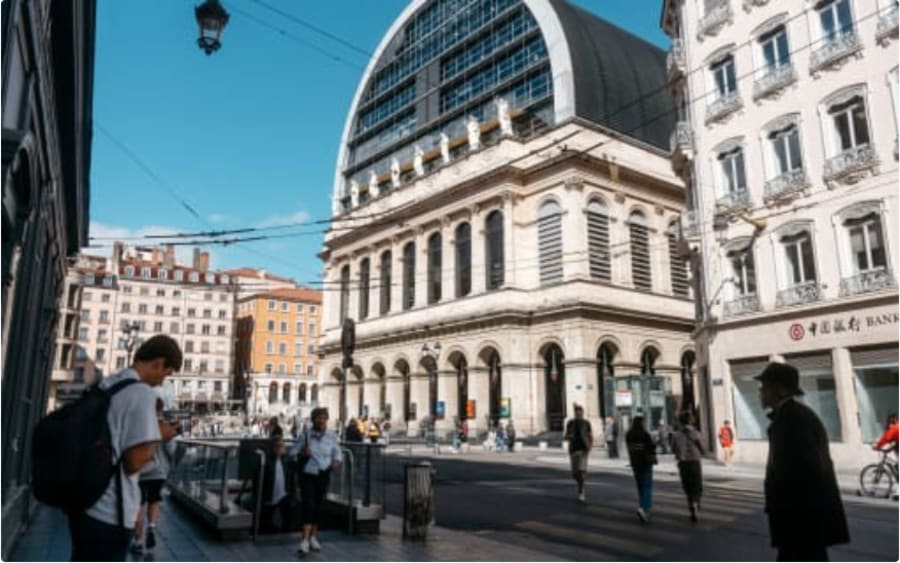海明威(Ernest Hemingway)在回憶錄《流動的盛宴》(A Moveable Feast,1964)中描繪了咆哮的二十年代(Roaring Twenties)時期的巴黎。對於那些渴望逃離美國禁酒令、享受城市樂趣的人們,彼時的巴黎令人陶醉,魅力十足。這是一座理想之城,甚至可以稱得上是一個避風港,吸引著在文化、藝術和性上追求自由的人們。在熙熙攘攘的咖啡館中,在炫目迷離的爵士樂俱樂部裏,巴黎的生活疾馳向前。
儘管女性獨立仍受限制(法國婦女直到1944年才獲得選舉權,婚姻法改革更是要等到1965年),許多女性依然認為生活在巴黎是一種解放。在這裡,她們可以自由進入學院機構學習,而在其他國家是不被允許的。她們還可以自由表達個性,追求愛情。女性可以同時扮演多重角色:繆斯、藝術家、作家和贊助人。琪琪.德.蒙帕納斯(Kiki de Montparnasse)和西爾維婭.畢奇(Sylvia Beach)就是這樣的典範,前者是表演者和藝術家,後者則在1919年創辦了傳奇的「莎士比亞書店」(Shakespeare and Company bookstore)。
「對我來說,巴黎是唯一一個可以自由生活和表達自我的城市。」美國作家娜塔莉.克利福德.巴尼(Natalie Clifford Barney)在她的回憶錄中如是說。巴尼在位於聖日爾曼德佩(Saint-Germain-des-Prés)的家中定期舉辦文學沙龍,這其中獨立與自由的精神吸引了眾多賓客,包括悅納自己雙性戀身份的畫家塔瑪拉.德.藍碧嘉(Tamara de Lempicka)。
在自畫像《Self-Portrait(Tamara in a Green Bugatti)》(1929)中,藍碧嘉筆下的自己是一名現代女性的典範,手握方向盤,風馳電掣,主宰著自己的命運。她與瑪麗.洛朗桑(Marie Laurencin)齊名,被譽為1920年代最受歡迎的肖像畫家之一,以其裝飾藝術風格的畫作聞名,將新立體主義與義大利手法主義的表現力融合在電影般的構圖中。她也常常光顧美國詩人、劇作家和收藏家葛楚.史坦(Gertrude Stein)舉辦的沙龍,史坦是畢加索(Picasso)的摯友,也是巴黎知識界的重要人物。
葛楚.史坦的嫂子Sarah Stein是亨利·馬蒂斯(Henri Matisse)的重要支援者,她通過攝影師愛德華.史泰欽(Edward Steichen)幫助馬蒂斯在美國舉辦展覽,在她的鼓勵下,馬蒂斯於1908年創辦了Académie Matisse,另一位在巴黎嶄露頭角的藝術家Marie Vassilieff就曾在此學習。
Marie Vassilieff與在時尚與設計界享有盛譽的藝術家索尼婭.德勞內(Sonia Delaunay)一樣來自俄羅斯,以其紡織作品而聞名,包括依照名人形象製作的「肖像娃娃」。1911年,她創辦了自己的學院,吸引了包括詩人、畫家和政治家在內的眾多知名人士,如紀堯姆.阿波利奈爾(Guillaume Apollinaire)、馬克.夏加爾(Marc Chagall)和列昂.托洛茨基(Leon Trotsky)。第一次世界大戰爆發時,她深感於藝術界朋友們的道德困境和物質困苦,於是將自己的工作室改造成了一個充滿活力的餐廳。1917年,一次傳奇性的派對在這裡舉行,當時大家正在慶祝喬治.布拉克(Georges Braque)從前線歸來,而醉酒的亞美迪歐.莫迪里安尼(Amedeo Modigliani)與雕塑家Alfredo Pina因愛情起了爭執,最終被畢加索和Manuel Ortiz de Zárate制止。
同年晚些時候,莫迪里安尼再次引發爭議:他在Berthe Weill的藝廊展出了裸體畫作Berthe Weill是巴黎第一位女性藝廊主,自1901年起,Weill就致力於展示尚未成名、年輕前衛的畫家作品。她為莫迪里安尼舉辦了他生前唯一一場個展,儘管有幾件作品因「傷風敗俗」而被撤下。Weill具有獨到的敏銳眼光,是年輕藝術家們真正的盟友。
畫家兼作家Juliette Roche也是這位熱忱的藝廊主推崇的藝術家之一。受到教母Greffulhe侯爵夫人以及其父親的教子尚·考克多(Jean Cocteau)的影響,Roche從小就浸潤在藝術世界中。杜象(Duchamp)將她介紹給贊助人路易絲和沃爾特·阿倫斯貝格(Louise and Walter Arensberg),Roche自此迅速成為巴黎和紐約的知名人士。她筆下非傳統的風俗畫場景和獨特的臉譜式構圖使她早於1914年就在巴黎的Bernheim-Jeune藝廊佔有一席之地。Roche在1918年創作了一副重要的無題畫作,後被稱為《American Picnic》。畫中描繪了一個伊甸園般的景象,以更風格化的構圖借鑒了馬蒂斯的作品《The Joy of Life》(1905-1906)。
在咆哮的二十年代,巴黎實現了人們對黃金時代的部分憧憬:似乎一切皆有可能,對於女性來說尤其如此。她們挑戰傳統,開闢了先鋒藝術的新天地。儘管有些女性藝術家在二戰期間被遺忘,但得益於AWARE(Archives of Women Artists, Research and Exhibitions)等組織的研究和努力,她們在藝術史上重新獲得了關注。這些女性藝術家的作品也出現在了在公共機構和私人基金會的專題展覽中,例如巴黎盧森堡博物館(Musée du Luxembourg)為巴西現代主義中心人物Tarsila do Amara舉辦的的展覽(2024年10月9日至2025年2月2日舉行),或者以藝術家遺產的形式呈獻給世人,比如由Pauline Pavec藝廊代理的Juliette Roche的作品。 該藝廊將在2024年巴塞爾藝術展巴黎展會的全新展區「藝新領異」(Premise)中設置獨立展位,專門展示Roche的作品。
巴黎展會的全新展區「藝新領異」將有9間藝廊代帶來獨特項目,包括1900年前創作的作品。
本文作者Marie-Émilie Fourneaux是一位現居巴黎的作家。
頁頂圖片標題:1932年,法國畫家瑪麗.洛朗桑在她的工作室,圖片由WIKI COMMONS提供
2024年9月19日發布


